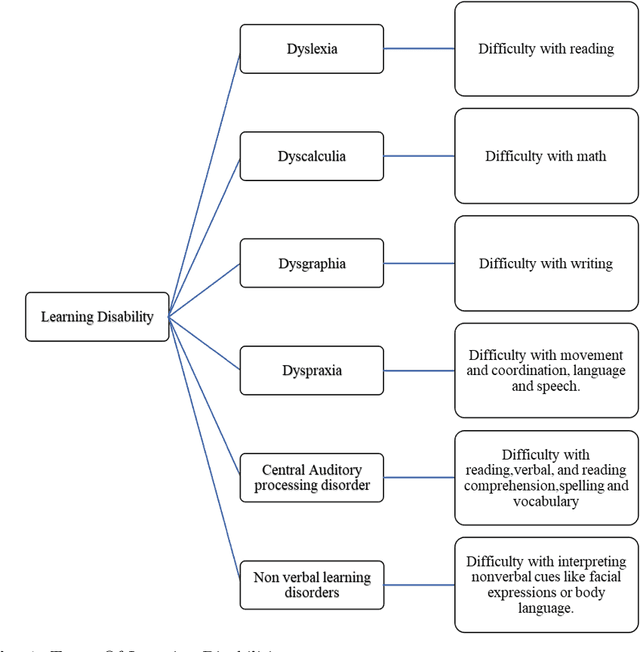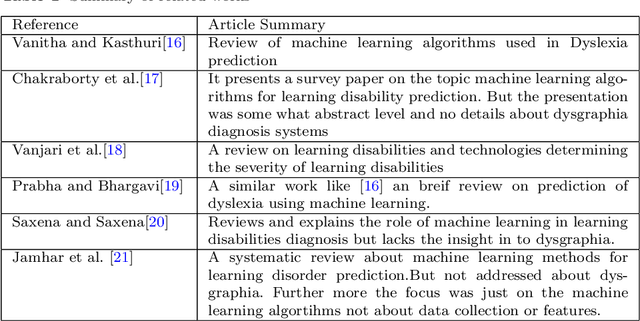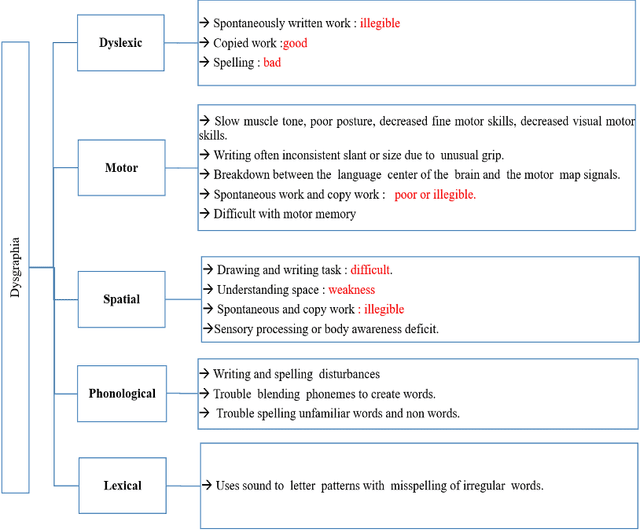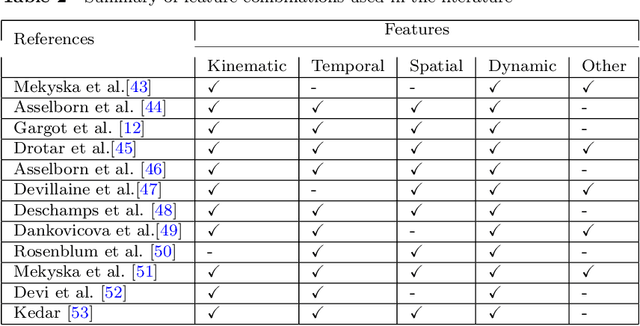Suchithra Kunhoth
Automated Systems For Diagnosis of Dysgraphia in Children: A Survey and Novel Framework
Jun 27, 2022



Abstract:Learning disabilities, which primarily interfere with the basic learning skills such as reading, writing and math, are known to affect around 10% of children in the world. The poor motor skills and motor coordination as part of the neurodevelopmental disorder can become a causative factor for the difficulty in learning to write (dysgraphia), hindering the academic track of an individual. The signs and symptoms of dysgraphia include but are not limited to irregular handwriting, improper handling of writing medium, slow or labored writing, unusual hand position, etc. The widely accepted assessment criterion for all the types of learning disabilities is the examination performed by medical experts. The few available artificial intelligence-powered screening systems for dysgraphia relies on the distinctive features of handwriting from the corresponding images.This work presents a review of the existing automated dysgraphia diagnosis systems for children in the literature. The main focus of the work is to review artificial intelligence-based systems for dysgraphia diagnosis in children. This work discusses the data collection method, important handwriting features, machine learning algorithms employed in the literature for the diagnosis of dysgraphia. Apart from that, this article discusses some of the non-artificial intelligence-based automated systems also. Furthermore, this article discusses the drawbacks of existing systems and proposes a novel framework for dysgraphia diagnosis.
 Add to Chrome
Add to Chrome Add to Firefox
Add to Firefox Add to Edge
Add to Edge